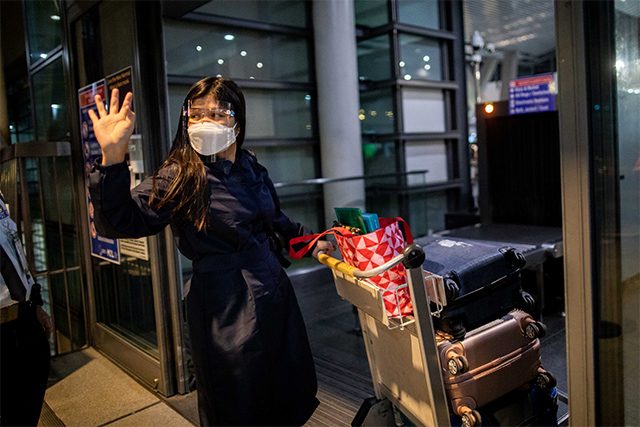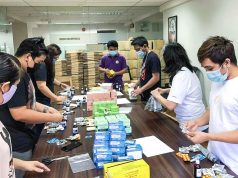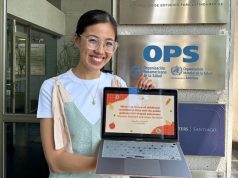
An urgent call to improve the compensation of Filipino healthcare workforce were made in a comment published in an international journal.
This comment titled “Outmigration and unequal distribution of Filipino physicians and nurses: An urgent call for investment in health human resource and systemic reform” was published in The Lancet-Regional Health in Western Pacific, a peer-reviewed journal, on July 8, 2022.
Tricia Robredo, daughter of former Vice President Leni Robredo, is the main author of this article.
The rest of the authors are physicians Bradley Ong, Michelle Ann Eala and Raymond John Naguit.
Naguit is also the chairperson of Akbayan Youth.
Robredo shared the link to this article on Twitter.
“We must invest in our HCWs and grow from the notion of health care as a purely altruistic vocation. Migration will continue with inadequate support, and this will have far-reaching consequences on health systems and populations,” Robredo tweeted.
We must invest in our HCWs and grow from the notion of health care as a purely altruistic vocation. Migration will continue with inadequate support, and this will have far-reaching consequences on health systems and populations.
More on @LancetRH_WPac: https://t.co/SH4Mmom3ln pic.twitter.com/MnoDRXNogj
— Tricia Robredo (@jpgrobredo) July 12, 2022
In their comment, Robredo and the three Filipino doctors cited the steady rise of new local healthcare workers in the country since the 1990s.
Rural and conflict areas, however, still remained insufficient of them.
They further said that “less than 25% of cities and municipalities” have met the World Health Organization’s human resource for health density recommendation.
Despite this shortage, skilled HCWs still prefer to work in urban cities and overseas, citing data from previous reports.
“Almost a fifth of Filipino HCWs are working overseas. In 2019 alone, at least 17,000 Filipino nurses signed overseas contracts,” their report reads.
The authors further said that the impact of this “out-migration” was felt during the peak of the COVID-19 pandemic.
The Philippines saw mass nurse resignations from private hospitals in 2020.
READ: Overwhelmed Philippines hospitals hit by staff resignations
This prompted the government to temporarily suspend the deployment process of HCWs, especially nurses, overseas in November 2021.
Robredo was also a co-author in a correspondence related to violence against HCWs in the country.
READ: Filipino medical workers call for justice for HCWs colleagues subjected to violence
‘Change perception on migration’
Filipinos normally perceived migration as a “selfless” act, according to the authors.
They recognized the benefits that overseas employment offers to Filipino HCWs, including higher salaries.

Still, the authors stressed that such situation should be viewed as a “desperate call of action” instead of a “selfless and patriotic act.”
“Among Filipinos, migration is overly romanticized and considered a selfless and patriotic act, instead of a desperate call to action. Filipino HCWs express concerns about cultural differences, discrimination, workplace abuse and loss of social support,” they said.
The doctors stressed that the government should also recognize the importance of just compensation to keep HCWs from going overseas or staying in urban cities.
“In line with this, it is important to grow from the common notion of health care as a purely altruistic vocation and recognize that compensation is crucial for sustained service, especially if HCWs are to be deployed outside the metropolitan area,” the doctors said.
“It is critical to revisit constraining provisions of legislation that aggravate inequities among resource-challenged LGUs, and ensure provision of additional support and sustainable measures,” they added.
The authors, meanwhile, recognized the efforts of the Department of Health to address some of these problems.
Some of these measures include the “Doctors to the Barrios” program and the “The Doktor Para sa Bayan Act.”
What gov’t can do
To resolve this crisis in human resource in the country’s healthcare system, the authors said that it will take a “whole-of-government approach” to make the necessary changes.
They shared many strategies and steps the government should take to resolve this prevailing problem. Among these are as follows:
- Alternate funding options, including potential partnerships with the private sector, must be explored
- Local chief executives must also be held accountable in exercising transparency and ensuring that HCWs receive their due
- Major investments in health, infrastructure and social services are paramount to address socioeconomic inequalities and threats to physical safety, especially in the rural areas
- Expanded scholarships and sustainable career development programs, and health professional curricula must be revisited and revamped to promote primary care, public health and rural practice









